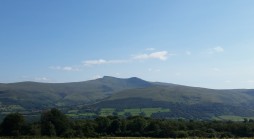John Betjeman once said that Ludlow is probably the loveliest town in England. I wonder how many he’d visited, because there’s some stiff competition out there. The only other example I’ve read where he commented about a place was in his poem ‘Slough‘ – and ‘Come, friendly bombs and fall on Slough‘ is hardly as complimentary. This might tell us more about Betjeman than it does about either destination except that I’ve been to both and I see his point. Not that I want bombs to fall anywhere, but Slough is pretty dire. Whereas Ludlow…
We first went to Ludlow about ten years ago and I don’t remember very much about it apart from buying some vegetables at the farmers’ market. Can you believe that we didn’t go into the castle? I’d been thinking about returning for a while and, left to my own devices for an hour this morning whilst Mr B was at the dentist’s, it occurred to me that today was the day to do it. As a reward for two days of painting the dining room it seemed just the thing. Mr B had only just got through the garden gate when I pounced with my plan, suggesting that we take a picnic with us that we could maybe eat in the castle grounds.
I’m willing to bet that my girls know what happened next; no sooner was the word picnic out of my mouth than Mr B was in the kitchen filling a saucepan with water so that we could take hard-boiled eggs with us. I’d really like us to be one of those families that organized gastronomic picnic spreads. But for all the magazine articles and television chefs, we are never going to pack felafels, frittatas and aubergine dip. Or individual frangipane tarts. Nope. We are firmly stuck in the middle of the 20th Century: ham sandwiches, sausage rolls, hard-boiled eggs and a tub of tomatoes, followed by fruit and maybe something from the cake tin (if there’s anything in there, which there wasn’t today). All we need is lashings of ginger ale and we’d be verging on the ridiculous, so we didn’t do that. We took a flask of iced orange barley squash instead.
So, Ludlow – it easily complies with the 2 Hour Rule, at an hour and a half away. Just as we closed in on the town along the A49 we spotted a Park-and-Ride sign and diverted towards it. Always a good move, because you don’t have to battle with one-way systems that you’re completely unfamiliar with as smirking locals whiz past you. The bus took us to a street about fifty yards from the castle so we decided to go in there first. This was when we encountered our only hiccup – Ludlow Castle is privately owned, by the Earl of Powis – so no National Trust or Cadw card was going to get us inside painlessly. We were obliged to pull out some real cash, a relatively unheard of experience for us at historical sites. It had better be good, I thought…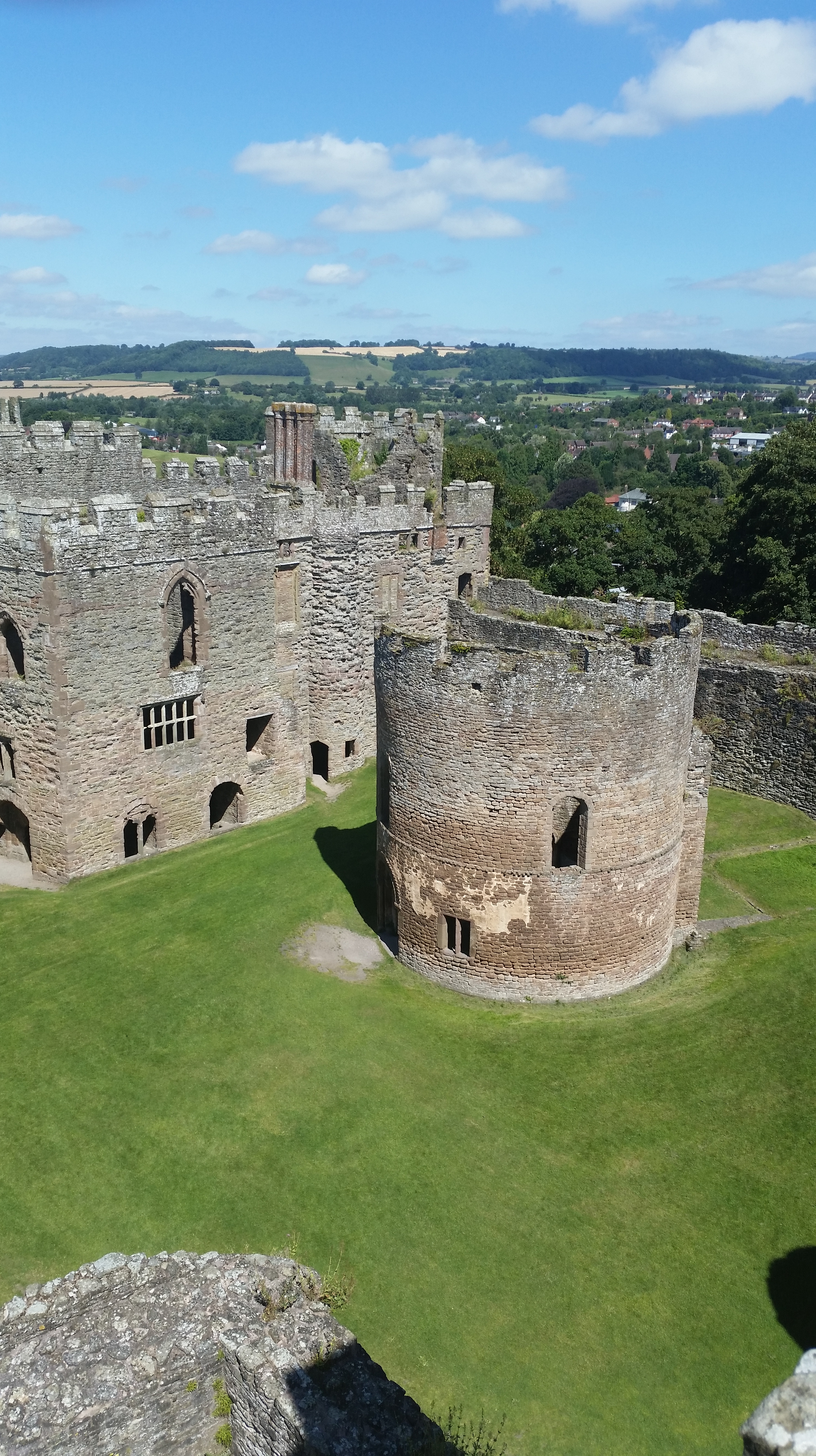 The inner bailey with the 13th century Great Hall on the left and the round Norman chapel. To the right of the Great Hall is the chamber block, added by Roger Mortimer in the 14th century
The inner bailey with the 13th century Great Hall on the left and the round Norman chapel. To the right of the Great Hall is the chamber block, added by Roger Mortimer in the 14th century
You know how I love a good castle, or even a mediocre one. And Ludlow is very good indeed.
It’s thought that the curtain wall and older buildings date from the 11th century. Certainly the place belonged to the de Lacy family, held by them since 1066. It remained in their possession for two hundred years before passing through marriage to one Roger Mortimer. I say one Roger Mortimer because there were several of these over the decades; this particular owner of the name was the most infamous, the one who became the lover of Isabella, estranged and power-hungry wife of Edward II. Between them they deposed and imprisoned Edward at Berkeley Castle in Warwickshire. There they (allegedly) had Edward murdered; details are impossible to prove but a red hot poker may or may not have been involved. All this was supposedly to put Edward and Isabella’s son on the throne, as his father had proved himself to be inept. But Edward III, then aged 14, was considered to be too young to rule a country; no problem – Roger would do it for him until he came of age. By 1330, the youthful king had had enough. He and a bunch of supporters sneaked into Nottingham Castle where Mortimer and Isabella were holed up, having realised that their regime was under threat. According to the 14th century chronicler Geoffrey the Baker (aka Walter of Swinbroke), as Edward’s party broke in and took Mortimer prisoner Isabella cried: ‘Fair son, have pity on gentle Mortimer!’
Gentle Mortimer? Really? Edward wasn’t swayed either. Mortimer was arrested for assuming royal powers and executed after the sort of trial which didn’t allow a defence.
The Mortimer line died out in the middle of the 15th century and the castle passed to Richard, Duke of York. When Edward IV became king in 1461, the castle became crown property and in 1472 the ‘Council of Wales and the Marches’ was established there, with responsibility for governing Wales and the Marcher Lordships. At one point it was home to the boys who became the Princes in the Tower, the lost sons of Edward IV.
In 1501 Ludlow Castle played host to Prince Arthur and his bride, Catherine of Aragon. Arthur, of course, was the eldest son of Henry Tudor – Henry VII of England – and would have become King Arthur on his father’s death. This was not to be, however. Five months after their November wedding, both Arthur and his bride contracted ‘the sweating sickness’, an illness that affected large swathes of the population from time to time. As far as I’m aware, this has never been completely explained (it seems to have been something like influenza) and could be deadly. The 15 year old Catherine recovered but Arthur didn’t, dying in April 1502 five months short of his 16th birthday.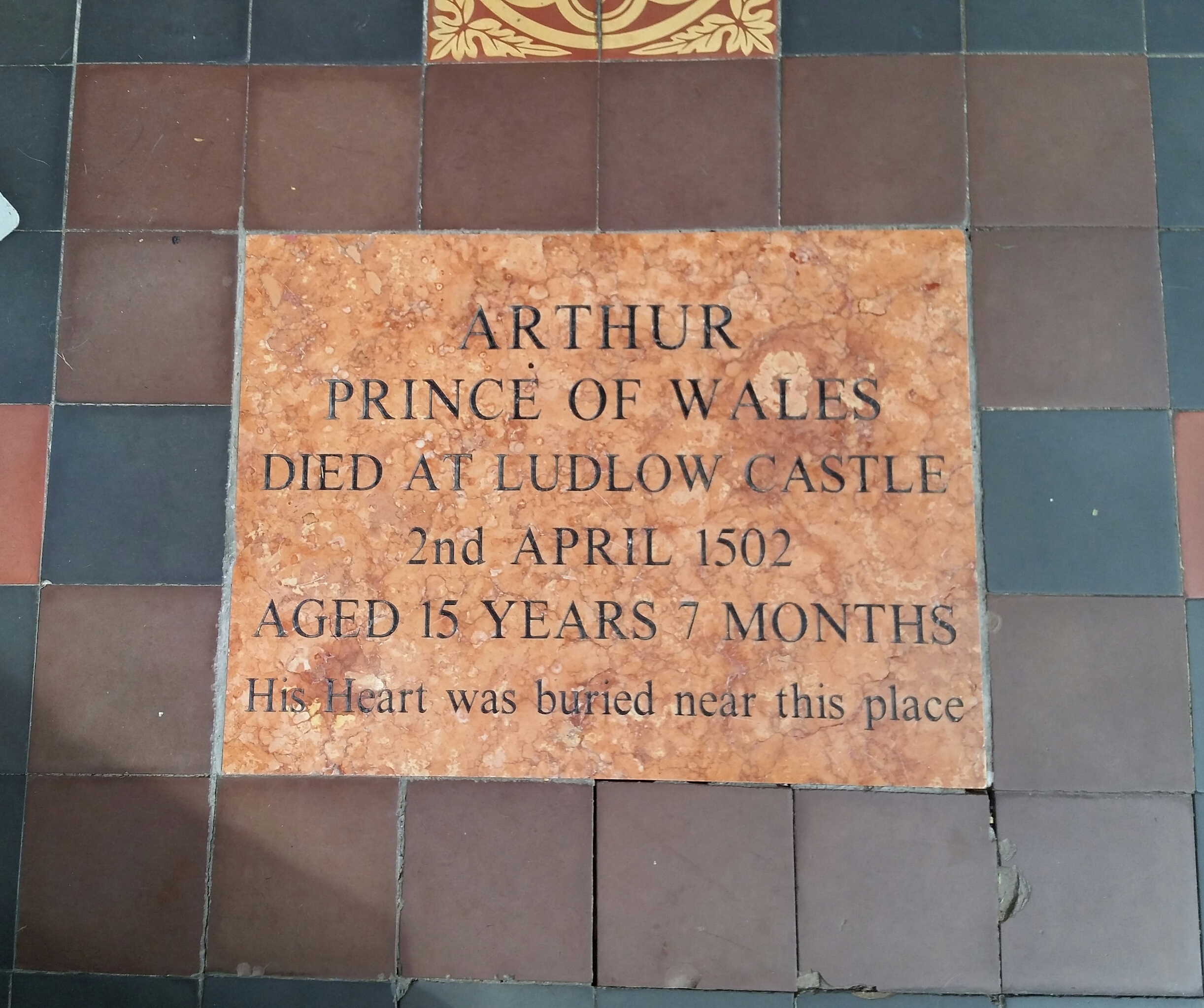 Plaque in the floor of the Church of St Laurence. The prince’s body was taken to Worcester Cathedral
Plaque in the floor of the Church of St Laurence. The prince’s body was taken to Worcester Cathedral
Now anyone with more than a passing interest in the Tudors will know the significance of this brief sojourn at Ludlow. It was here that the young couple failed to consummate their vows, leaving the way open for Catherine to become the wife of her dead husband’s brother; such was Catherine’s claim, anyway. This was accepted at the time and she was allowed to marry her young brother-in-law, who became Henry VIII, against the rules of the Church. Inevitably this became extremely messy and the marriage was ultimately annulled when Henry’s eyes turned elsewhere. It strikes me that Catherine got off lightly, with her head still attached to her shoulders.  The block to the left of the stairs leads to apartments used by Prince Arthur
The block to the left of the stairs leads to apartments used by Prince Arthur
Catherine’s daughter by Henry, Mary Tudor, spent three winters in Ludlow as a young girl between 1525 and 1528. The castle had been much extended by then, and as a witness to the relentless business of an important administration centre, the future Mary I must have learned a lot. The Council of Wales and the Marches was abolished on 25th July 1689, leading eventually to the desertion of the once great castle.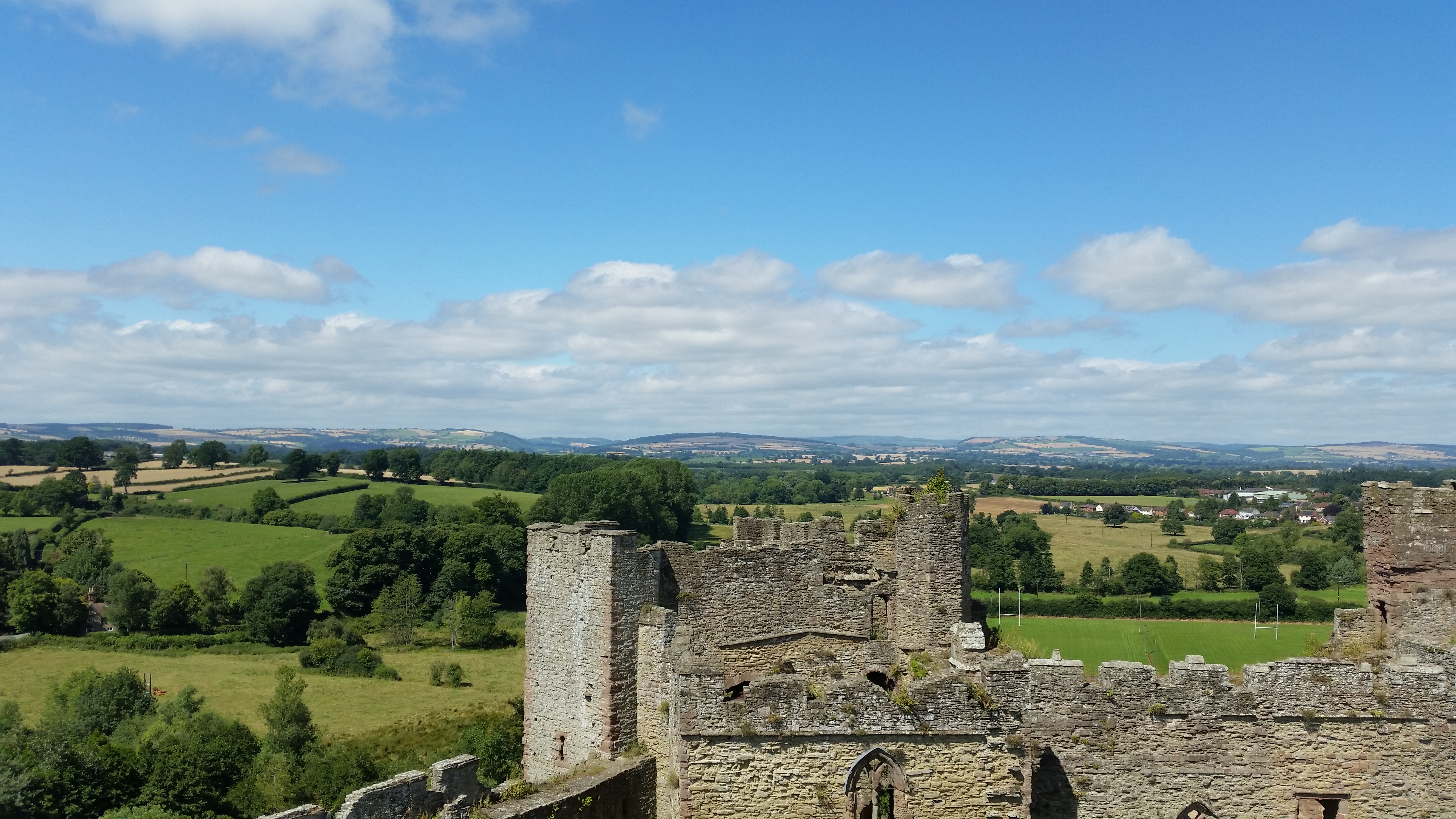 A view from the tower, looking across the Marches towards Wales…nothing threatening out there!
A view from the tower, looking across the Marches towards Wales…nothing threatening out there!
We climbed over various walls, up stairs and through doorways for an hour or so and then went and enjoyed our eggs and other goodies at one of the picnic tables in the huge outer bailey. As always it’s difficult to look around the peaceful scene with its crumbling buildings, trees and grass lawns, and imagine how it would have looked in its heyday when it was virtually a provincial capital, administering laws, hearing criminal cases and catering for enormous assemblies of people, with the all the usual requirements: livestock, kitchens, staff, blacksmiths, soldiers and so on.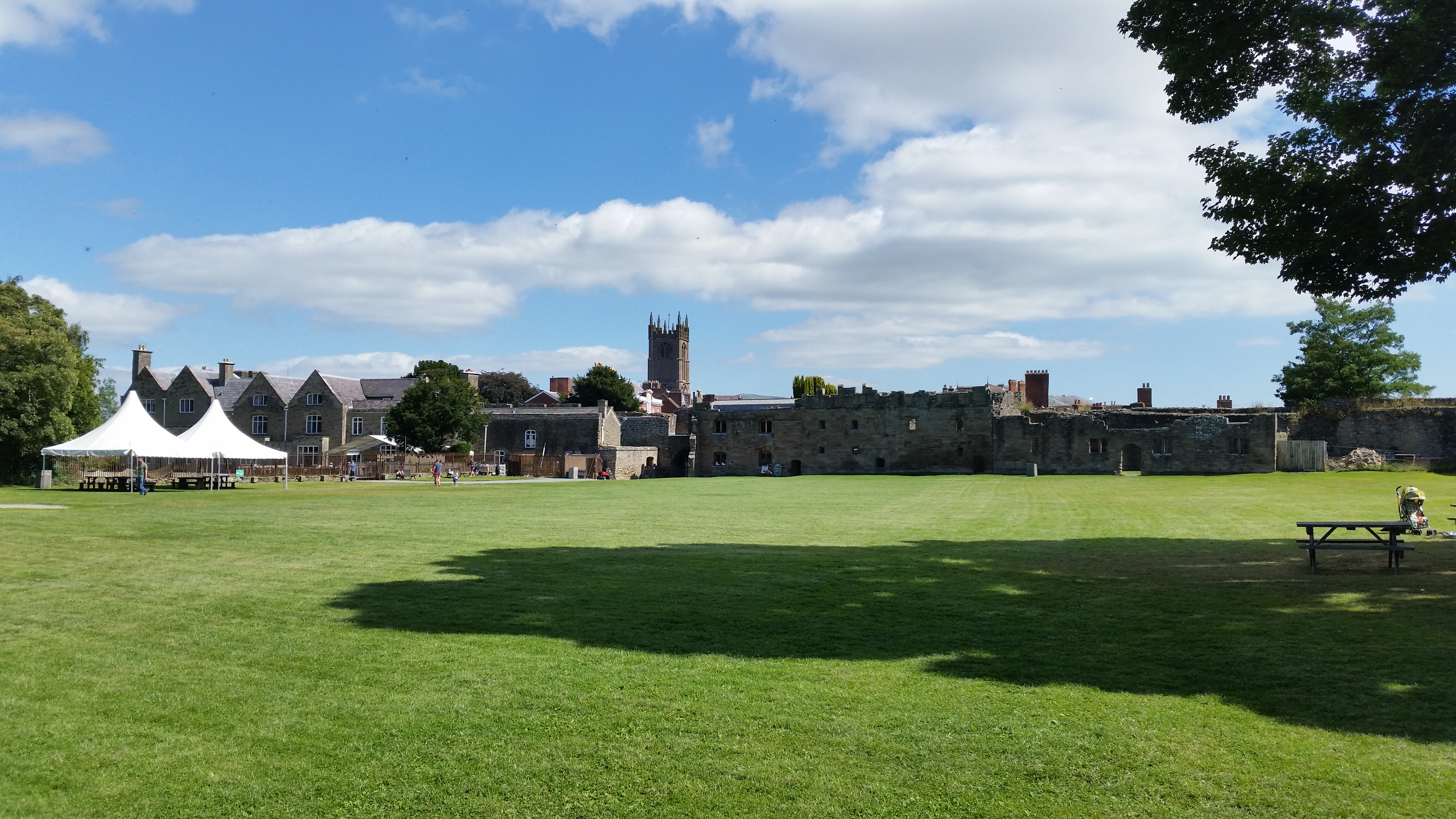 A view across the outer bailey. The buildings on the right are the porter’s lodging, the prison and the stables. The tower of St Laurence’s is in the centre, outside the castle walls
A view across the outer bailey. The buildings on the right are the porter’s lodging, the prison and the stables. The tower of St Laurence’s is in the centre, outside the castle walls
We left the grounds and wandered out towards the street stalls, a stone’s throw from the castle entrance like all good medieval market-places. And once a market-place, always a market-place; Housman wrote ‘The lads in their hundreds to Ludlow come in for the fair’ as part of his collection ‘A Shropshire Lad’ published in 1887. It wasn’t quite that busy but it’s still thriving.
Hidden away in the narrow streets (until you look up and see its tower) is the Church of St Laurence.
The building was originally begun by the Normans in the 11th century (of course – terribly pious, the terrible Normans) but extended and largely rebuilt a hundred years later, with further additions in the 15th century. As with all such churches there are plenty of treasures, such as carved 15th century misericords on the chairs in the choir stalls. Now I had always thought that these were a mean device, put there to ensure that people stayed awake by denying them a smooth surface to rest against. It seems I’m wrong – the carving is on the underneath of a fold-up seat. In the days when prayers and offices (lengthy affairs all) had to be made standing, chair seats would be flipped up and participants could rest their weary backsides against a shelf constructed on the undersurface – a bit like a medieval shooting stick. Eventually these shelves became more highly decorated (like everything else) and so we see these elaborate adornments. You learn something new everyday!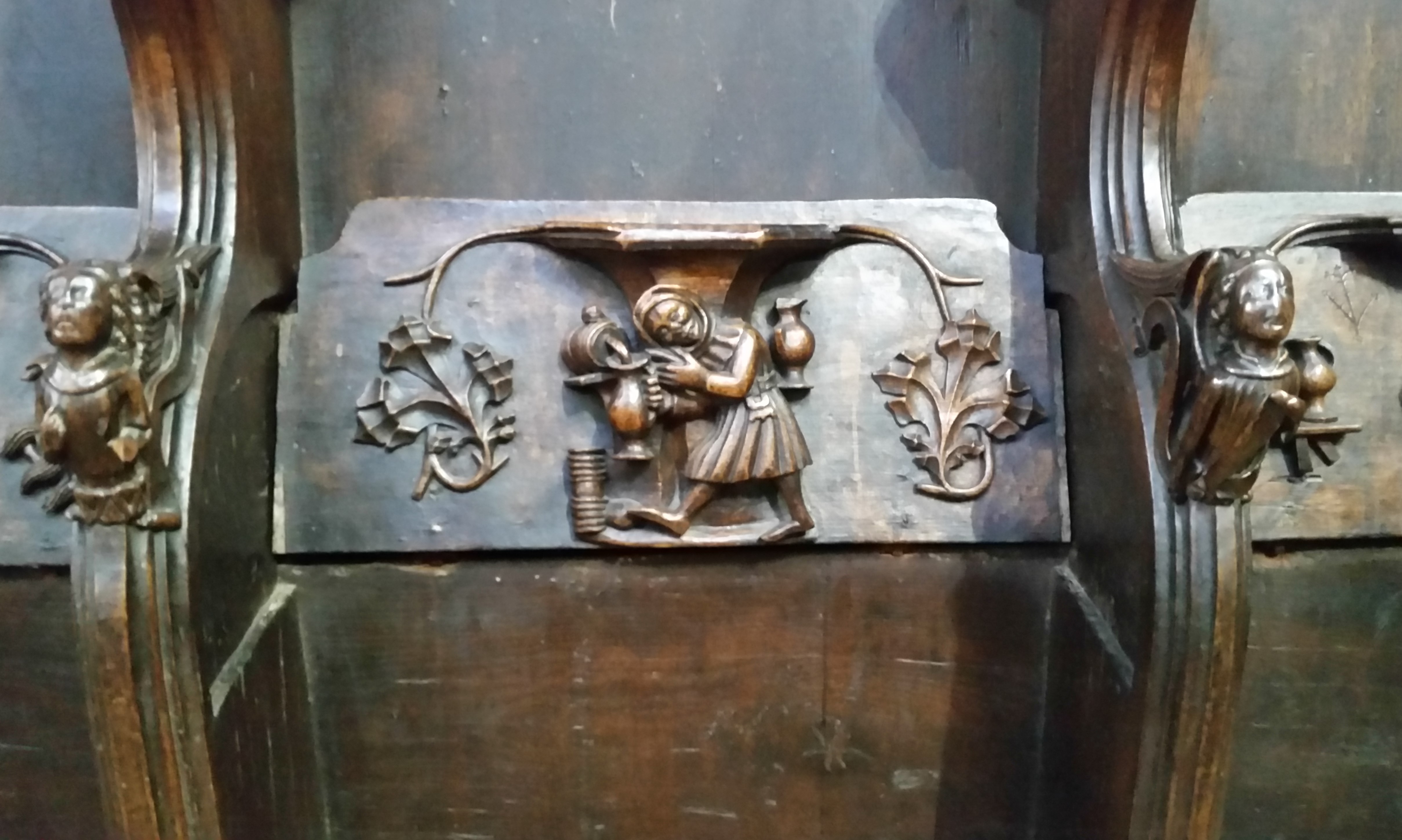 Misericord on the folded up underside of a choir chair
Misericord on the folded up underside of a choir chair
 The decorated ceiling in the church
The decorated ceiling in the church
We went back to the market to wait for the bus to the Park-and-Ride and treated ourselves to an ice-cream from ye olde Tudor ice-cream shoppe. Again, our formative food years caught up with us as we spurned the pistachio and the salted caramel, Mr B choosing his usual mint and chocolate chip, me going for my all-time favourite rum and raisin. Though if there’d been a raspberry ripple on offer, who knows what might have happened?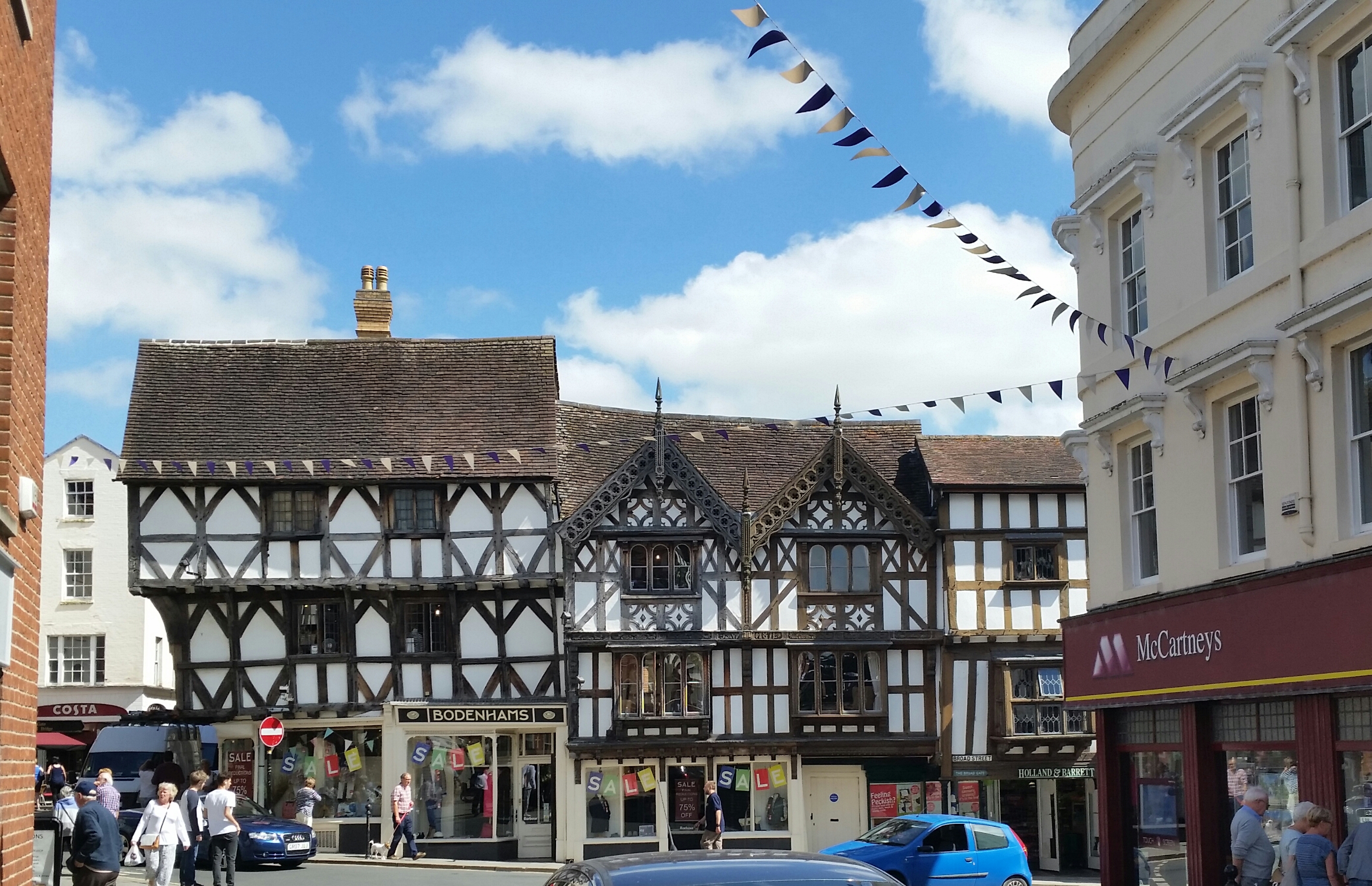
On the way to Ludlow we’d followed the A465 through Hereford but felt like an easier time on the return journey, so turned off and crossed the River Lugg at Leominster. This route took us through Marcher heartlands, past Painscastle, Pipton and Bronllys. All of them quiet now, their castles in ruins and their histories largely forgotten – what I wouldn’t give for a time machine!
*
The sound of fight is silent long
that began the ancient wrong;
long the voice of tears is still
that wept of old the endless ill
A Shropshire Lad: The Welsh Marches
A.E.Housman
